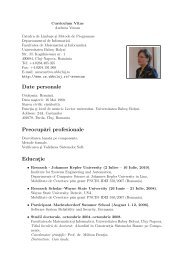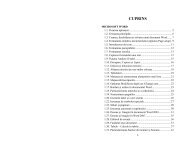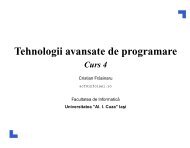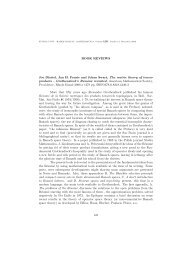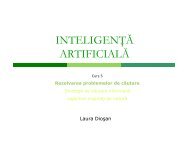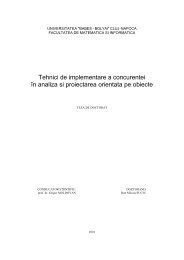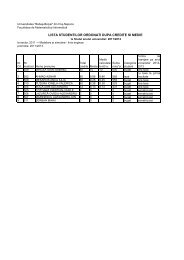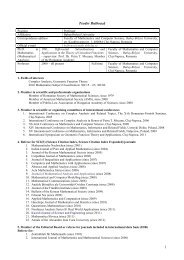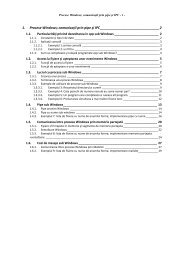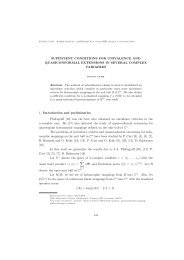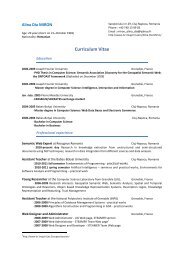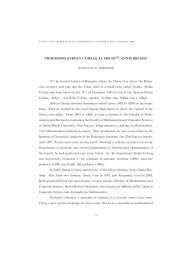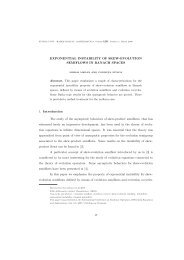CONTENTS
CONTENTS
CONTENTS
Create successful ePaper yourself
Turn your PDF publications into a flip-book with our unique Google optimized e-Paper software.
KNOWLEDGE ENGINEERING: PRINCIPLES AND TECHNIQUES<br />
Proceedings of the International Conference on Knowledge Engineering,<br />
Principles and Techniques, KEPT2009<br />
Cluj-Napoca (Romania), July 2–4, 2009, pp. 211–214<br />
ONTOLOGY DEVELOPMENT: A SOFTWARE ENGINEERING<br />
APPROACH<br />
DUMITRU RĂDOIU(1) AND CĂLIN ENĂCHESCU(2)<br />
Abstract. Indentifying several analogies between ontology development and object<br />
oriented analysis and design, the paper reviews the existing literature to<br />
assess the practical utility of a software engineering in ontology development as<br />
well as its limits.<br />
1. Semantic Web, Ontology and why should we develop them<br />
Semantic Web [4] is the new-generation Web (Web 3.0) that tries to represent<br />
information in such a way that it can be used by machines not only by humans (as<br />
it is the case with hypertext mark-up languages based Web 1.0); it’s about making<br />
information stored in Web Resources accessible for automatic processing, integration,<br />
and reuse across applications [1]. This leads to large-scale interoperation of Web<br />
services, to creation of a Web of machine-understandable and interoperable services<br />
which intelligent agents can discover, execute, and compose automatically [2].<br />
First step to accomplish this vision is declaring how the information of a domain<br />
(e.g. education) is semantically organized: generic entities, their possible properties,<br />
what type of relationships could we expect to exist among entities, how different<br />
entities could be grouped (taxonomy), what terms (vocabulary) we agree to use when<br />
presenting new information from this domain. This is called developing an ontology<br />
for the domain (an ontology and not the ontology because there is more than one way<br />
to develop it).<br />
Second step - when we make a resource available on the Internet - is to declare that<br />
a this Web Resource adheres to the previously mentioned semantic structure, to the<br />
aforementioned ontology. Although there’s no general agreement with respect to the<br />
term knowledge, we shall use it with the meaning ”organized semantic information”<br />
(different from human knowledge) and the action of making it available in this form<br />
is referred as providing semantic-based access.<br />
Web 1.0, based on mark-up languages, was concerned only with how to display<br />
information in a consistent manner for human consumption. Knowledge was achieved<br />
by humans accessing information distributed in billions of Web Resources. Search<br />
engines would return answers to queries without having any idea about the meaning of<br />
2000 Mathematics Subject Classification. 68N30, 68T05, 62M45.<br />
Key words and phrases. ontology development, semantic web, software engineering.<br />
211<br />
c○2009 Babe¸s-Bolyai University, Cluj-Napoca



